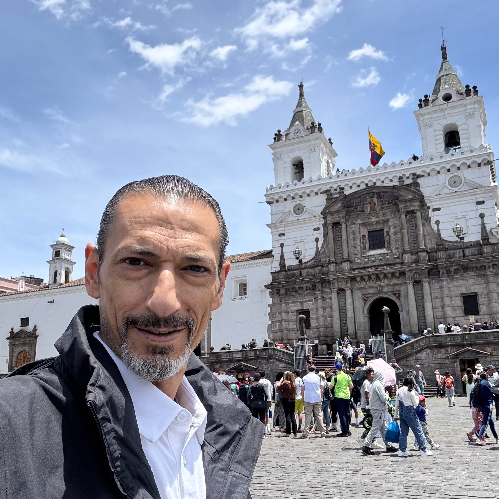Best places in Ecuador to visit
From icons to hidden treasures
















Tailor-made trips, just for you, by local experts
Discover what makes Ecuador unforgettable





The Galápagos Islands are world-famous for their one-of-a-kind wildlife. You can snorkel with sea lions, hike beside giant tortoises, and spot exotic birds like the blue-footed booby. Every day feels like a new adventure in these islands, where you can experience nature in its purest, most untouched form—no other place quite compares.


Ecuador’s Andes are not only breathtaking but deeply connected to the local culture. Hike around Cotopaxi, one of the world’s tallest active volcanoes, or visit traditional villages like Quilotoa, where indigenous communities still thrive. You can explore the stunning landscapes while learning about the customs and way of life of the people who call these mountains home.


Ecuador’s slice of the Amazon is a lush, vibrant paradise. Imagine cruising along jungle rivers, surrounded by towering trees and exotic animals like pink dolphins and howler monkeys. Stay in eco-lodges that blend luxury with sustainability, and experience the natural wonders of the rainforest while learning about its critical role in our ecosystem.


Cities like Quito and Cuenca blend old-world charm with vibrant local culture. Think cobblestone streets, beautiful colonial architecture, and bustling markets. You can spend a day wandering through Quito’s historic center, a UNESCO site, or just sip coffee in a plaza, soaking up the atmosphere.

Plan with confidence
Meet the experts who make your journey special



Rough Guides gets rave reviews
Trustpilot Rated 4.7/5.021/06/2025
Maria was incredibly patient at working through a number of iterations of my itinerary on a very limited budget to make it as special as possible. Once I arrived everything was seamless and Maria kept in touch throughout my trip to check that everything was on track and whether I needed anything. All the people doing transfers and the guides were very friendly and professional, and the accommodation in Cusco was good. Highly professional service which facilitated me having a really memorable experience.
01/05/2025
Maria Jose put together a great plan for us. She responded to our initial ideas with wonderful specifics, added some of her own suggestions (which we also liked) and came up with terrific new proposals as our thinking evolved. We are planning far ahead, so won't make the trip until next year, but we have a really, really good plan to work from.
13/04/2025
Maria is highly recommended. She as been both helpful and creative. Our group of 4 wanted a cudtomised plan, then we changed countries and dates. She professionally handled all these requests.
10/04/2025
Maria Jose provided great service and attention to detail. She took the time to understand my expectations and her communication was excellent. I highly recommend!!!
11/03/2025
This was my family’s first time taking a personalized tour and working with RoughGuides. We choose RoughGuides after reading reviews on multiple travel-related sights. RoughGuides has direct staff and contracted guides in many countries. Our trip planner was based in Ecuador although our trip was to Chile. RoughGuides utilizes a web chat system to manage planning staff and traveler communications. The traveler provides an initial summary of trip goals and the RoughGuides planner starts building a plan/itinerary for the trip. The process was straightforward but would be easier and more efficient if RoughGuides had a detailed “traveler profile questionnaire.” For example, our family prefers quiet mornings until about 10 AM. This fact didn’t seem relevant until draft plans/itineraries continued to have touring activities start between 8 and 9 AM. Overall our family was impressed by the quality of the RoughGuides team and the local travel guides/drivers who RoughGuides employs. All of our guides spoke understandable to excellent English and were well-versed in local facts, histories, and culture. One of the ways our family enjoys the local flavor of destinations is via food tours. We usually include at least one food tour in our itinerary. This experience sold our family on personalized touring. We’ll continue using personalized touring when traveling to destinations where our native language, English, is less common.
31/01/2025
It's the second time I use Rough Guides for a trip. The first one was fantastic, the past one extraordinary. What a trip we had, would go as far as saying life-changing. The places I visited and the humans as guides changed the way I viewed the place. Nothing but good, nah, great things to say. Do not hesitate to go with rough guides, then you will not have to think, just enjoy the voyage
From icons to hidden treasures
















Discover Ecuador's most captivating stories
Arrange your trip, hassle-free, with local travel experts
Arrange your trip with local travel experts